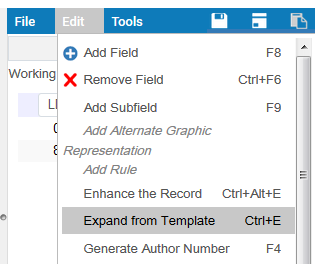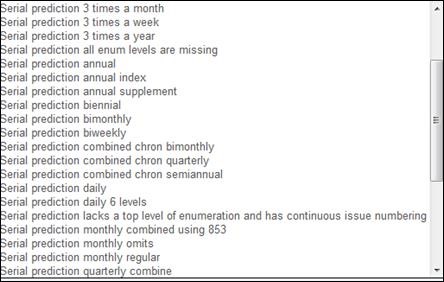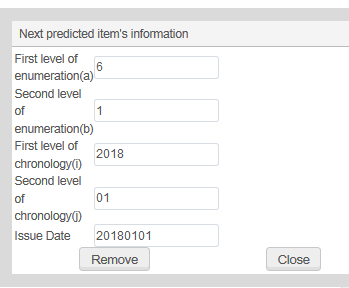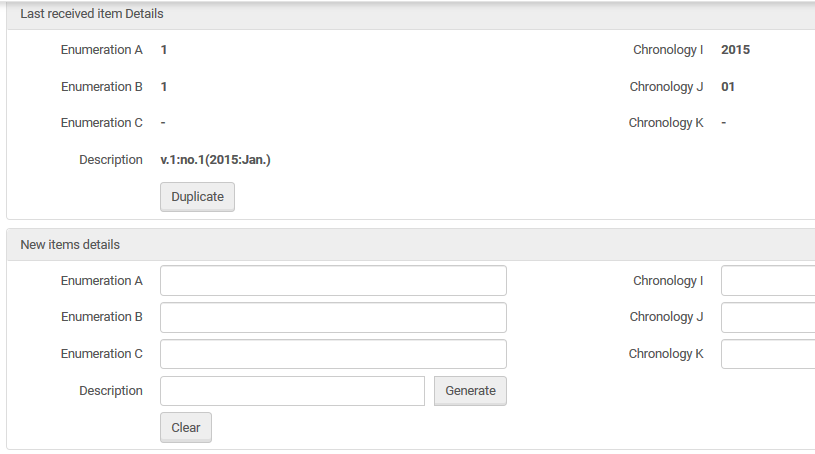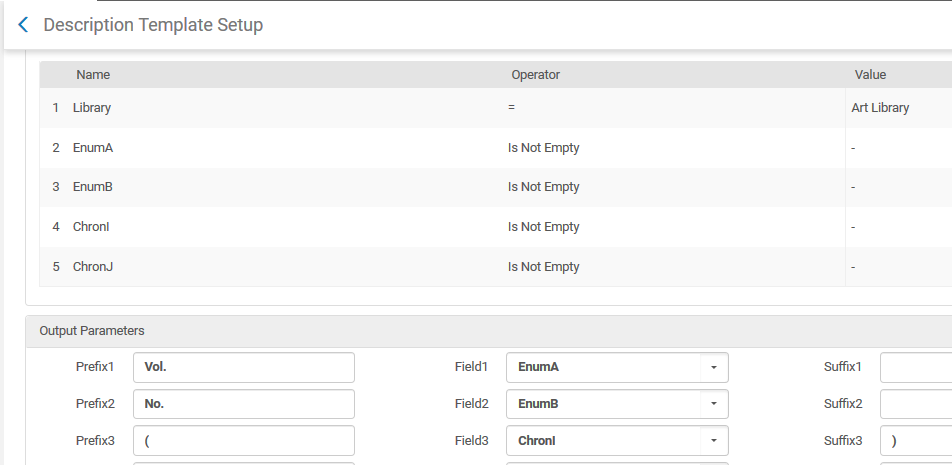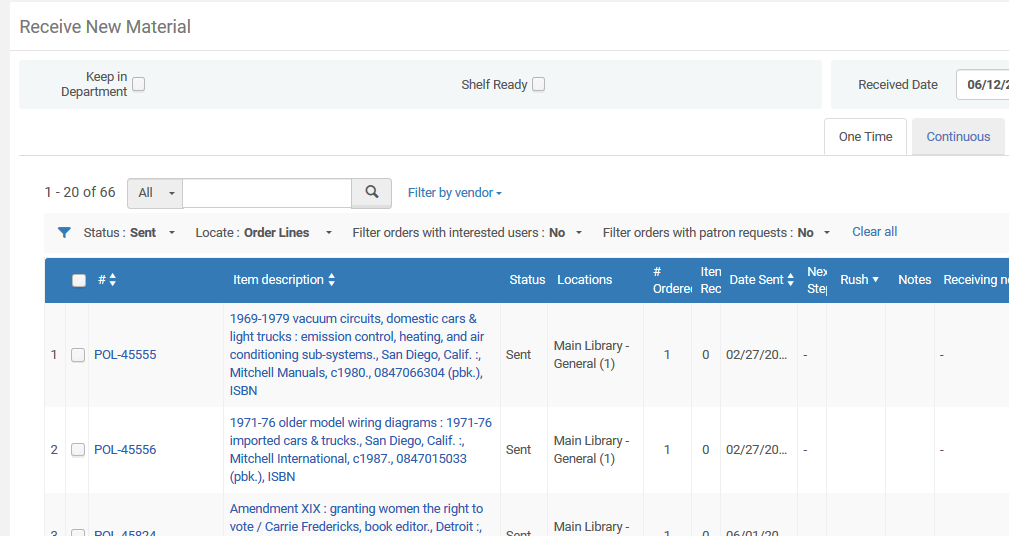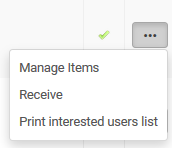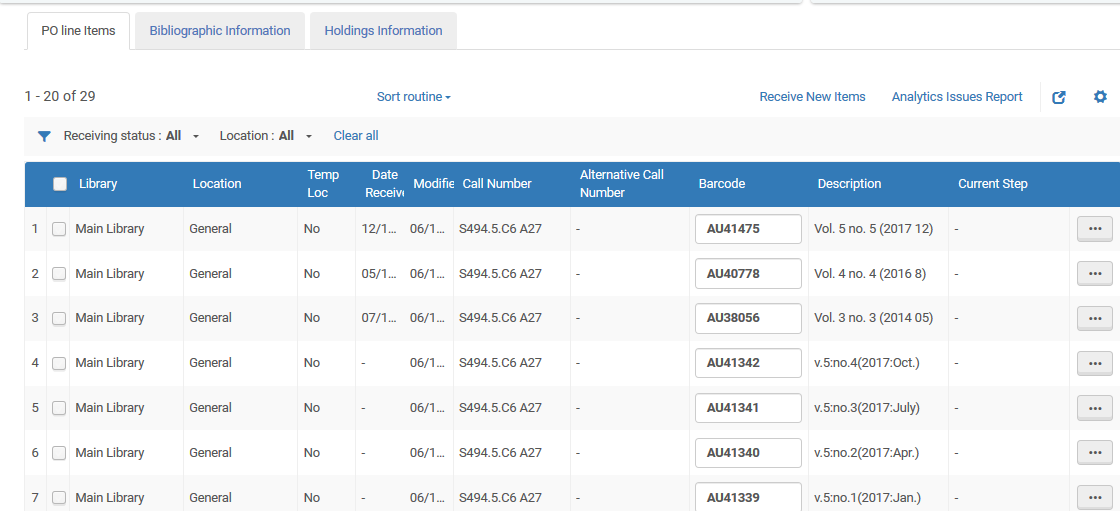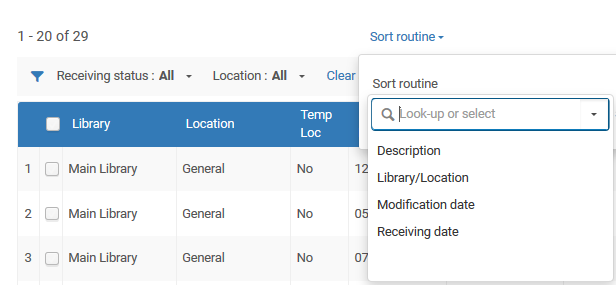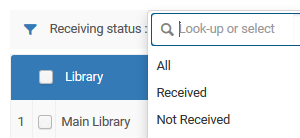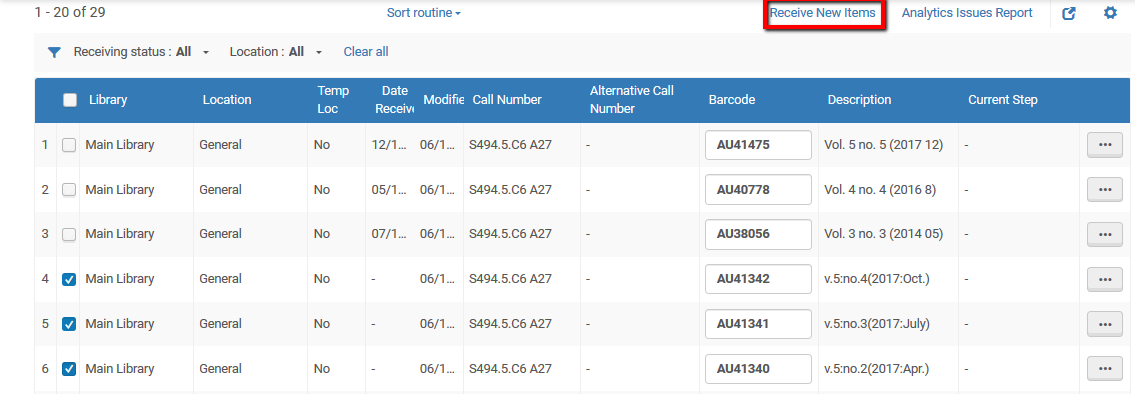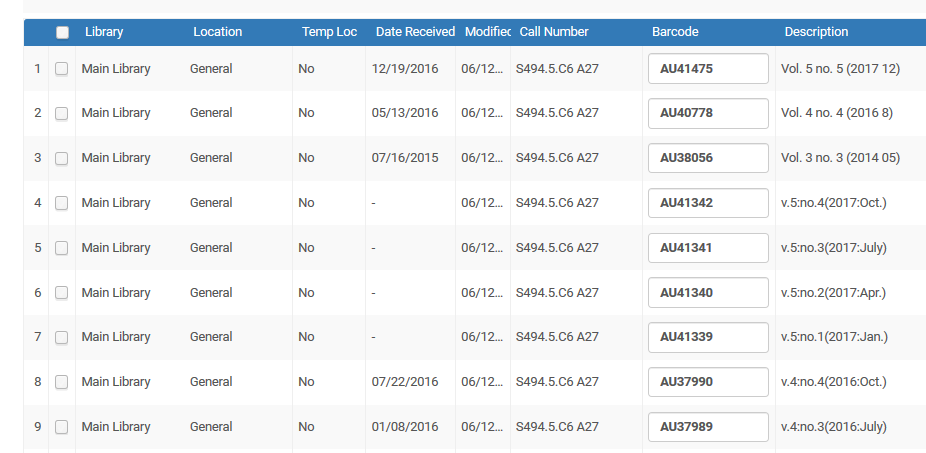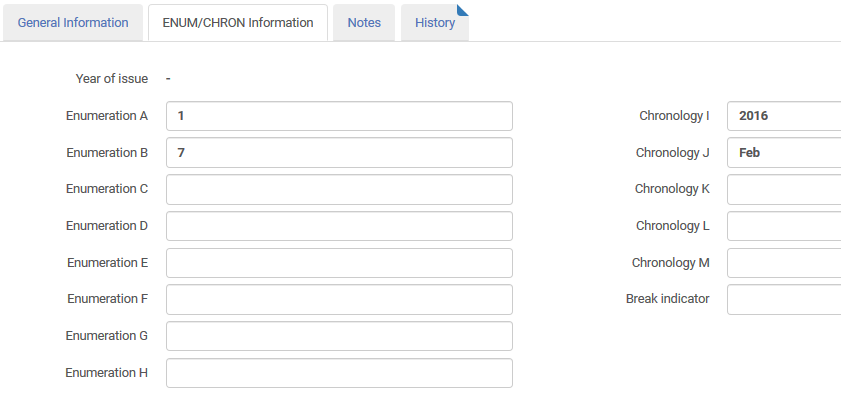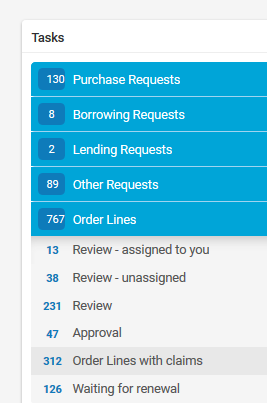General
What functions are supported for print serial management?
Prediction patterns: Alma support full prediction pattern functionality based on the MARC standard 853 field.
Receiving - Issues are received using the receive functionality in Alma, utilizing the concept of a ‘receiving department’. This also helps support the reflection of a typical separation between serial and monograph handling in the library. The department is tied to a specific location in the institution, which helps route the physical item to its permanent location. In this way, the staff user will only see titles belonging to his/her associated department on the Receive Screen.
Item creation – With prediction pattern support, it is possible to create serial items in advance of their receive date based on a prediction template.
Label Printing - Alma can integrate with locally-used label printing applications through downloading a local component that utilizes web services to communicate with Alma and the local label printer.
Claiming - In Alma, by default, claims are configured to be processed automatically. They can, however, also be generated on-demand. Automatic claims are created for a Purchase Order (PO) line that has not been received within the expected number of days after placing the order (based on parameters defined in the vendor record) or by the expected receipt date.
Binding - Alma supports workflows related to binding. Staff can review a list of issues and create a bound volume. All of the item records for the issues incorporated in the bound volume will be marked as withdrawn, and will not display in the Discovery Tool.
Routing – As part of Acquisitions management, it is possible to define if a subscription should be routed as well as defining members of the routing list. This information will display as part of new issue creation.
Prediction patterns
Does Alma support prediction patterns for print serials?
Alma supports full prediction pattern functionality based on the MARC standard 853 field. The first step in the workflow is to create an order record for the serial title. As part of the order creation (manually or as an imported record), a holding record is created. At this stage, this is a basic record with an 852 field with library and location information inherited from the parameters in the order record.
Alma supports a long list of out of the box templates for most of the patterns that can be expected for a serial publication.To add a pattern to the existing holding record, the cataloger chooses the Expand from Template option in the Edit menu of the MD Editor:
The list of templates displays:
Clicking on a template title will open the template for editing:
In the example above a template that has 9 issues a year ($$u 9) with no issues in February, July, and December ($$y om02, 07, 12) was chosen. The additional 590 note field explains and expands on the information registered in the 853 field. This template might exactly match the prediction pattern of the serial. Alternatively, if the match is close, but not exact, it can be modified. For example, the cataloger changes the $$y data as follows: $$y om03, 08, 11 – i.e. there will be 9 issues per year, but no issues in March, August and November:
Once the pattern has been defined the cataloger can view the next (first) expected item information - either from the Tools menu, or by clicking on the field glasses next to the 853 field.
Parameters can be viewed and modified if necessary (for example the expected issue date).
The cataloger can then open the predicted items – choosing Save to save and open expected issues, or Discard if the data is not correct and the 853 field needs to be updated.
The Expected Arrival Date displayed is the issue date plus the subscription interval defined in the order record.
How are irregular publications handled?
Many serials are published at irregular intervals. Very often there is no data about how many issues will be published in a defined time period (e.g. a year), or when a new issue will be published. It is sometimes possible to create a prediction pattern for the publication that will approximate the general behavior pattern of the publication. For other serial titles the staff user might choose to receive each issue as it arrives. Alma has strong, efficient functionality to help the staff user with these workflows.
As with receiving regularly published issues that have been created using the Alma publication pattern functionality, irregular issues are received from the Continuous tab on the Receive screen.
Clicking on ‘Receive Items’ opens a screen with information about the last received issue.
The first section of the screen displays information about the serial title, vendor and order line information (hypertext linked), location, and the option to navigate to the linked holdings record.
Receive settings can be defined – e.g. if the item needs to stay in the department, receiving date and so forth.
The next section show details of last item received. Clicking on the ‘Duplicate’ button creates a new issue based on the parameters of the displayed issue. This approach helps ensure consistency in recording the data for new issues. Changes can then be made relevant for the new issue.
Alternately, the new item details section can be filled in manually. The Generate button next to the Description field will generate a description based on the input in the enum and chron fields. Library defined description templates will populate the field with the relevant description for volume, issue, etc.
An example of a description template:
Is it possible to specify the number of elements of a lower numbering level for a numbering change for the higher level?
This is possible in Alma. The numbering levels of the prediction patterns works according to strict MARC 853/4/5 fields.
Multiple enumeration levels can be used before the cycle (which is typically a volume) restarts.
For example, if the holdings record has an 853 field as follows:
85303 $$a v. $$b no. $$u 6 $$v r $$c pt. $$u 2 $$v r $$d sect. $$u 2 $$v r $$i (year) $$j (month) $$k (day) $$w s $$8 1
Then this will predict a semimonthly (twice a month) publication with four levels of enumeration that begins with v.1, no.1, pt.1, sect.1
- Subfield a is the prefix for enumeration level a. In the example above v.
- Subfield b is the prefix for enumeration level b. In the example above no.
- Subfield c is the prefix for enumeration level c. In the example above pt.
- Subfield d is the prefix for enumeration level d. In the example above sect.
- Subfield u "6" means it is published 6 times a cycle for the highest level (in this case the cycle is one volume)
- Subfield u "2" means it is published 2 times a cycle for the next level
- Subfield u "2" (2nd occurrence) means it is published 2 times a cycle for the next level
- Subfield v "r" means it repeats after each cycle
- Subfield w "s" means it is Semimonthly
The issues will be opened as follows, provided the first issue is Jan. 1 2018 and is Volume 1, Issue 1, part 1, section 1:
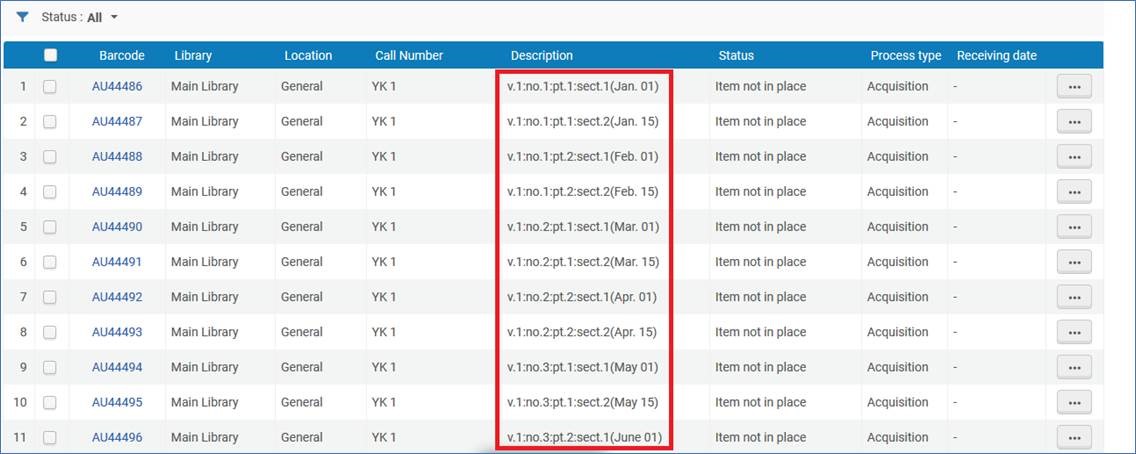
Receiving
How are serial issues received in Alma?
Receiving - Issues are received using the receive functionality in Alma, utilizing the concept of a ‘receiving department’. This also helps support the reflection of a typical separation between serial and monograph handling in the library. The department is tied to a specific location in the institution, which helps route the physical item to its permanent location. In this way, the staff user will only see titles belonging to his/her associated department on the Receive Screen.
In addition, the Receiving Screen is divided into two tabs – one for monographs, and one for continuous. The default tab display is based on user preferences (i.e. the tab activated on the user’s last login).
The staff user can navigate to the PO Line by clicking on the PO Line number.
Clicking on the title will display bibliographic details with the option to edit the record.
There are options to filter the display of journal titles by a number of parameters such as by PO Line status, by vendor or by Interested Users. Filtering by vendor is especially useful if a consignment of issues from a vendor is received and needs to be checked-in.
Alternately, the operator can key in the ISSN, title, or other unique identifier in the Find search box, in order to quickly locate a journal title.
Each title on the Receive screen will have an Actions (...) button with the option to:
The Manage Items screen:
On this screen it is possible to sort the list of issues by out of the box and/or library configurable sort routines, in ascending or descending order:
It is also possible to filter the list of issues displayed by Received/Not Received and/or location:
From the Actions (...) button at the end of an issue line, the staff user can click on the Receive option in order to receive the issue. If a number of issues for the same title arrive together, staff can utilize a workflow of checking the checkboxes of the issues to be received, and then clicking on the Save and Receive button.
Is there an option to show received and expected issues on the same screen?
The option to see expected and received issues can be seen on the Manage Items screen:
Can issue be 'unreceived'?
A workflow allows for 'unreceiving' issues that have been received in error:
Can notes linked to an issue or title be displayed when receiving?
The Receiving note can be seen on the general Receive screen and also on the checkin screen:
Is the staff user warned that an issue must be routed?
The check mark in the notes column indicates that there is a note attached to the serial. A confirmation note for issues that need to be routed will display:

Issue details
How is descriptive information about an issue defined?
The item details section of the issue record will either be populated by the duplicate option or can be filled in manually. The generate button will generate a description based on the input in the enum and chron fields. Library defined description templates will populate the field with relevant description for volume, issue, etc.
An example of a description template:
Can enumeration values display as text, rather than as numbers?
If a journal issue has, for example:
-
Enumeration level a = ‘2’
-
Enumeration level b = ‘10’
-
Chronology level i = ‘2012’
Then the description is generated with numbers rather than words: Vol.2, 10 2012. In order to display words for the month it is possible to define description templates that will translate numbers to words.
An example for January:
Does Alma support all levels of enumeration and chronology?
Alma supports all levels of enumeration and chronology as defined in MARC21:
Can 86x fields be automatically generated?
Alma will automatically generate 866/867/868 fields -- if 853/854/855 and 863/864/865 fields already exist in the bibliographic record. This is dependent on applying normalization rules to the Holding record:
- MarcDroolNormalization
- MARC21 Expand Holding By 863/4/5 Task
- MARC21 Expand Holding By 866/7/8 Task

Does Alma support SICI numbers?
The SICI number is available for searching PO lines and for serial EDI claims. On the Continuous tab of the Receive New Material page, you can now select a SICI code io find the related PO line.
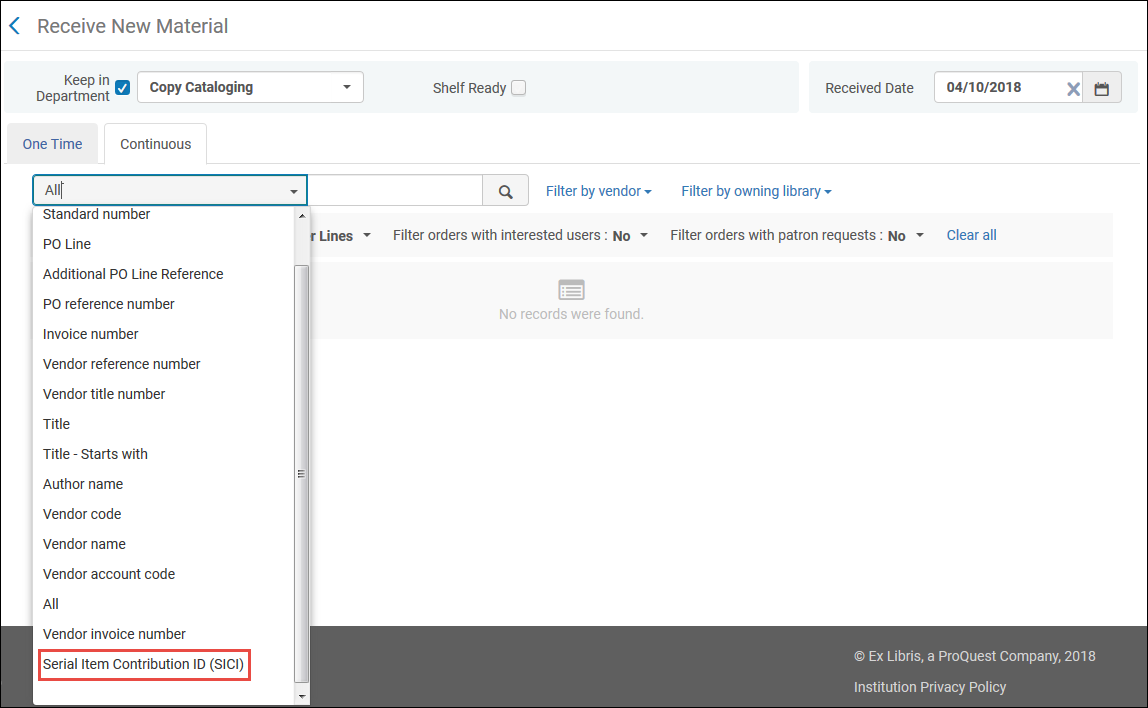
Renewals
See under Acquisitions:
RenewalsClaiming
How are serial issues claimed?
Claim information for serials can be generated automatically in Alma on the level of the title and on the issue level. It is generated based on data in the vendor record (subscription grace period) and in the PO Line (subscription interval).
Order Lines with claims will display in the Alma Task List (based on the roles of the staff user).
The Claim List can be filtered by a variety of facets – e.g. by Purchase Type. Hypertext links for each record allow for a number of options such as Editing the PO Line, Changing the Expected Date, etc.
The edit option will open the PO Line of the record. From there it is possible to navigate to the item (issue) records.
The staff user may then see the issues that should have arrived, and need to be claimed.
For vendors that support EDI claims, the notification is sent using EDI.
